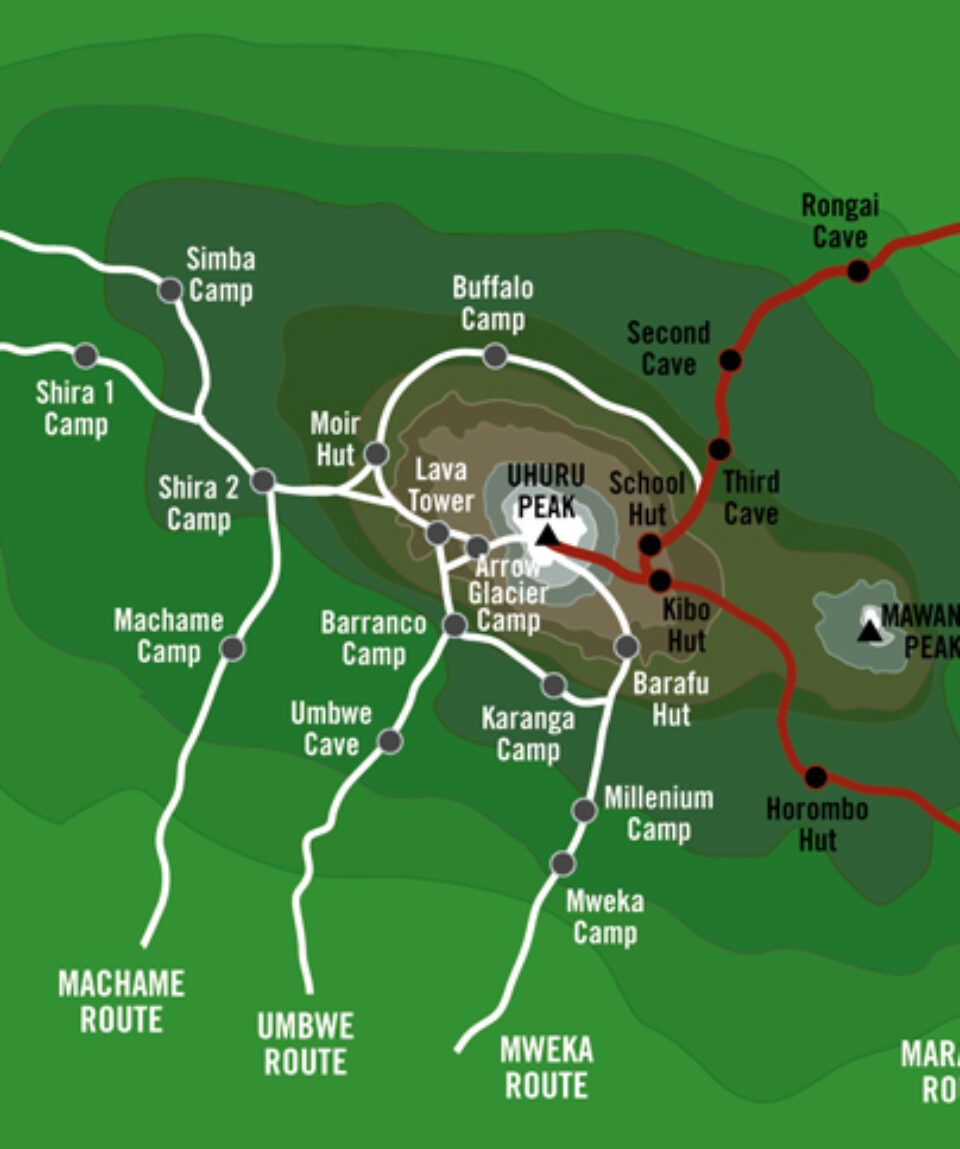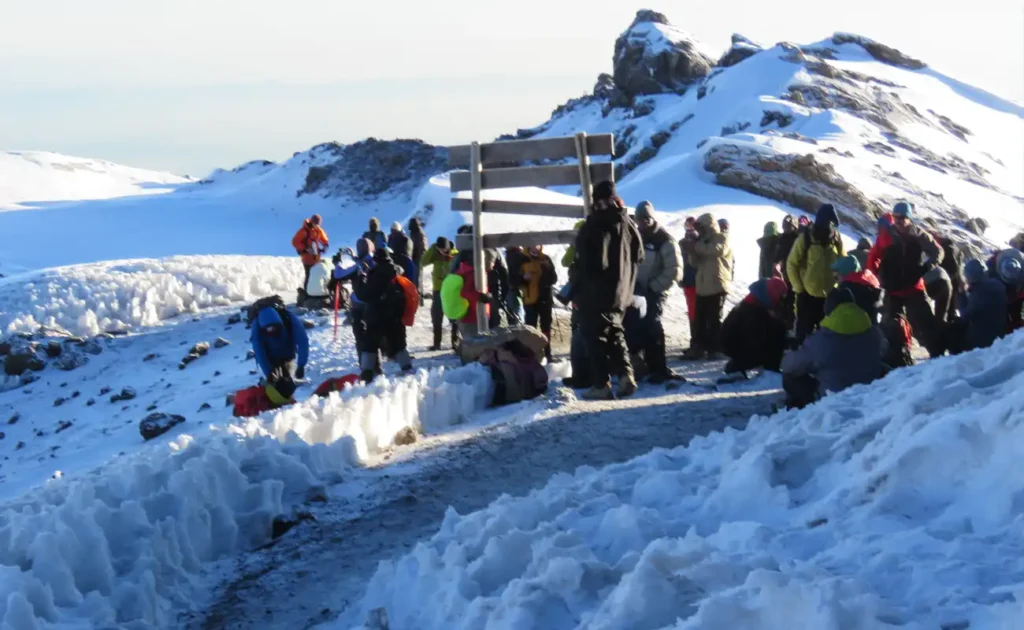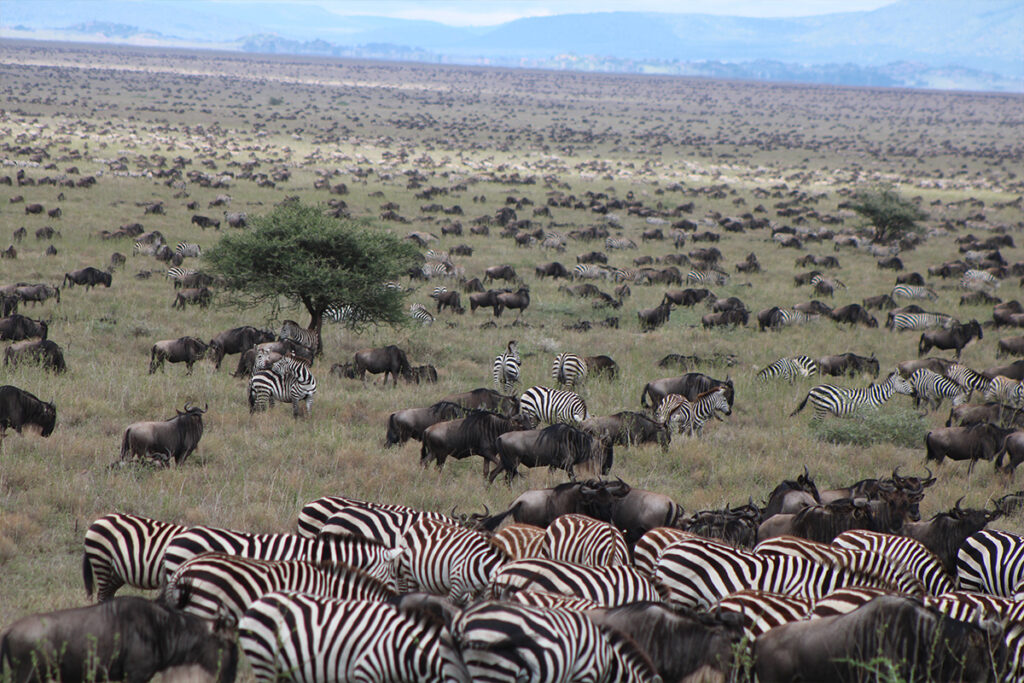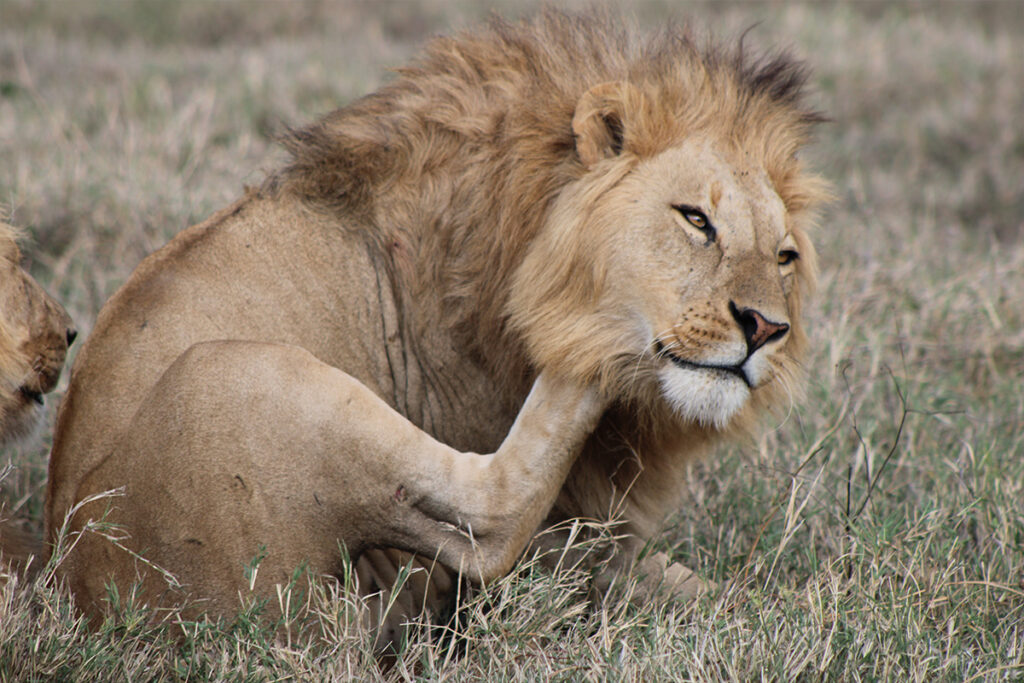Embarking on the Umbwe Route of Kilimanjaro is not for the faint of heart; it’s renowned as the mountain’s shortest, yet steepest path. This trail demands resilience and dedication, rewarding those who dare with unparalleled splendor from the highest free-standing mountain in the world. For experts seeking a blend of raw adventure and unforgettable vistas, the 6-day itinerary promises both challenge and triumph.
Tracing back to its early days, the Umbwe Route has captivated climbers with its direct approach to the summit. Historically favored by seasoned mountaineers, this path now attracts those ready to test their limits on Kilimanjaro’s formidable slopes. With a success rate hovering around 70%, this serious undertaking combines intense trekking, vivid ecological zones, and the prize of Uhuru Peak’s breathtaking sunrise.

6-Day Umbwe Itinerary: A Challenging Kilimanjaro Climb
The Umbwe Route on Kilimanjaro is known for its steep and direct path. This itinerary covers six days of intense hiking, pushing climbers to their limits. Despite the difficulty, it’s one of the most rewarding routes, offering breathtaking views and a sense of accomplishment. Climbers will traverse various ecological zones, from dense forests to alpine deserts. Each day presents unique challenges and stunning landscapes.
Preparation is key for this demanding climb. Ensuring you have the right gear and adequate training can make a significant difference. Pack light but smart, bringing necessary items like warm clothing, trekking poles, and energy snacks. Altitude sickness is a potential issue, and climbers should be aware of its symptoms. Proper acclimatization can also play a crucial role in the success of the climb.
Throughout the six days, climbers will encounter distinct environments. The journey begins in a lush rainforest, moving on to heath and moorland zones. Higher altitudes bring rocky landscapes and sparse vegetation. The final ascent is challenging, taking you through icy trails to reach Uhuru Peak. This diversity makes the climb both fascinating and demanding.
Safety is paramount on the Umbwe Route. Guides are trained to handle emergencies and monitor climbers’ health closely. Following their advice and maintaining a reasonable pace can enhance your chances of success. Respect nature by staying on designated trails and following environmental guidelines. With determination and careful planning, the 6-day Umbwe Itinerary can be a life-changing adventure.
Kilimanjaro Umbwe Route Dec 2022
The Overview of the Umbwe Route
The Umbwe Route is one of the shortest and steepest paths to the top of Kilimanjaro. It starts at the lush gates of Umbwe and quickly ascends through a dense forest. As climbers progress, the terrain becomes more rugged, providing a direct route to Barranco Camp. This path is less crowded, making it a favorite for those seeking solitude and an intense challenge. Despite its difficulty, the rewarding views keep adventurers motivated.
While the route is shorter, it calls for exceptional physical fitness and determination. The rapid altitude gain can make acclimatization challenging, so it’s crucial to listen to your body. Here’s a quick look at the different sections covered over six days:
- Day 1: Umbwe Gate to Umbwe Cave Camp
- Day 2: Umbwe Cave Camp to Barranco Camp
- Day 3: Barranco Camp to Karanga Camp
- Day 4: Karanga Camp to Barafu Camp
- Day 5: Barafu Camp to Summit and then to Mweka Camp
- Day 6: Mweka Camp to Mweka Gate
Each section offers its unique challenges and sights. The first two days weave through forests and moorlands before reaching the Great Barranco Wall. From there, climbers face daunting elevations, but the views make it worthwhile. The final ascent begins at Barafu Camp, leading to the ultimate reward at Uhuru Peak. This route promises an unforgettable experience for skilled trekkers.
Logistics involve more than just mapping out the route. Consider factors like group size, permits, and necessary gear for the journey. Ensuring experienced guides accompany your group is crucial for safety and success. Weather conditions can also vary, so it’s smart to prepare for extremes. With the right preparation, the Umbwe Route offers an exhilarating adventure filled with natural beauty.
Preparation for the 6-Day Umbwe Itinerary Climb
Preparing for the Umbwe Route’s challenging climb demands both physical and mental readiness. Training should begin months in advance, focusing on cardiovascular fitness, strength, and endurance. Regular hikes combined with gym workouts can help condition your body. Additionally, practice with a weighted backpack to simulate the actual climb. Staying consistent with your training routine will enhance your chances of a successful ascent.
Ensure you pack strategically for the journey. Essential items include sturdy hiking boots, layered clothing, and a well-fitting backpack. Here’s a list of recommended gear:
- Waterproof jacket and pants
- Base layers and insulating layers
- Gloves and hat
- Trekking poles
- Hydration system
- Sunglasses and sunscreen
Besides physical preparation and gear, understanding the route’s demands is crucial. Climbers should be aware of the altitude’s impact and potential for acute mountain sickness. Taking preventive measures, such as acclimatization days and hydration, can mitigate these risks. Mentally preparing for the trek’s rigorous nature is equally important. Visualization and relaxation techniques can help maintain focus and motivation.
Logistics also play a significant role in preparation. Securing necessary permits, booking experienced guides, and planning travel arrangements are essential steps. It’s also wise to familiarize yourself with local customs and environmental guidelines. Respecting the mountain and its surroundings ensures a safer, more enjoyable climb. Effective preparation combines physical training, proper gear, route knowledge, and logistics.
Highlights and Challenges of the Umbwe Route
One of the biggest highlights of the Umbwe Route is the striking scenery. As you climb higher, the landscape changes dramatically. You’ll move from lush forests to rocky terrains, each offering unique views. The sight of Kilimanjaro’s glaciers from the summit is simply unforgettable. These vistas are a photographer’s dream.
However, the route is not without its challenges. The steep incline makes the trek physically demanding. Hikers need to be prepared for long, uphill climbs. This route is less frequented, which means fewer fellow climbers and sometimes more isolation. The toughest part is undoubtedly the final ascent, which can be grueling.
Altitude sickness is another concern. The rapid gain in elevation gives little time for acclimatization. Symptoms can include headaches, nausea, and dizziness. To combat this, it’s essential to pace yourself and stay hydrated. Guides are trained to recognize early signs and take action.
Weather can also be unpredictable. Even in the dry season, conditions can change rapidly. It could be sunny one moment and rainy the next. Packing appropriate gear for varying weather is crucial. Being prepared for sudden changes can make your climb more comfortable.
Social interaction is limited. Since fewer people take this route, there are fewer opportunities to meet other adventurers. However, this can also be a positive aspect for those seeking solitude. The minimal traffic helps maintain the route’s pristine condition. It also provides a more personal experience with nature.
Despite these challenges, the Umbwe Route offers immense rewards. Achieving the summit after such an intense climb is a significant milestone. The diverse landscapes and solitude make it a favorite for seasoned hikers. The journey tests your limits but also builds resilience and provides a deep connection with the environment.
Why Umbwe Route is the Most Challenging Trek on Kilimanjaro
The Umbwe Route is considered the toughest trek on Kilimanjaro mainly due to its steepness. From the very start, climbers face sharp inclines that challenge even seasoned trekkers. This climb is not forgiving, offering little rest for the weary. The continuous uphill journey pushes climbers to test their physical limits. It’s a true test of endurance and strength.
Despite its short distance, the route offers little room for acclimatization. Rapid altitude gain can lead to altitude sickness, a common concern among climbers. This makes it crucial to monitor your health closely during the ascent. Before starting, climbers should be aware of the symptoms and prevention methods. Proper acclimatization is often limited due to the quick pace of the climb.
Not only is the terrain steep, but it is also rugged. Hikers must navigate through slippery roots, rocky paths, and narrow trails. These conditions require technical skills and focus. The Umbwe Route doesn’t leave much room for error, making each step critical. A wrong move can quickly lead to accidents.
The weather adds another layer of complexity. Shifts between sunshine, rain, and wind can occur rapidly. Climbers need to be prepared with appropriate gear for all weather conditions. The unpredictability of the climate means extra caution is necessary. Being prepared for varied weather ensures a safer adventure.
Isolation is another aspect that makes this trek challenging. With fewer people taking this route, there’s less opportunity for social interaction or assistance from other climbers. However, this isolation also brings a sense of tranquility and connection with nature for those who dare to take it on. The route demands self-sufficiency and reliance on guides.
Many take the Umbwe Route for the thrill and the challenge. It offers unparalleled rewards once completed. Reaching the summit after overcoming multiple hurdles provides a sense of unparalleled achievement. Those who tackle this demanding trek leave with experience, admiration, and respect for Kilimanjaro’s ferocity. Each obstacle faced becomes a memorable part of their journey.
Success Rates and Safety Measures for the Umbwe Route
Success rates on the Umbwe Route can vary, often resting between 60% and 70%. This is due to its steepness and quick ascent, which challenges even the most prepared climbers. Achieving the summit is an impressive feat, requiring both physical and mental endurance. Experienced guides play an essential role in navigating the route and aiding climbers. They offer vital support and encouragement throughout the journey.
Safety is paramount when tackling the Umbwe Route. Many preparation steps help reduce risks associated with the trek. Key safety measures include:
- Traveling with certified guides
- Regular health check-ups during the climb
- Carrying essential first-aid kits
- Ensuring proper hydration and nutrition
- Monitoring altitude sickness symptoms
Using the buddy system can also enhance safety. Having a climbing partner makes it easier to keep an eye out for potential issues. Partners can encourage one another to take breaks or make adjustments as needed. It’s also helpful to have someone nearby in case of emergencies. This system fosters a supportive atmosphere.
Guides are equipped to handle emergencies. They are well-trained in altitude sickness management and first aid. Keeping communication open with them is essential for maintaining safety. It’s important to inform guides about any lingering symptoms or concerns. Following their advice minimizes risks and boosts climber confidence.
Adjusting the pace can also positively impact success rates and safety. Going too fast increases the likelihood of developing altitude sickness. Slow and steady usually leads to better outcomes. Taking time to rest and adjust improves acclimatization. Doing this enhances both the experience and the likelihood of reaching the summit.
Key Takeaways
- The Umbwe Route is steep and direct, ideal for experienced climbers.
- You’ll encounter stunning views and diverse landscapes along the way.
- Physical endurance and mental resilience are essential for this trek.
- Proper acclimatization helps reduce the risk of altitude sickness.
- Preparation is crucial for a successful climb on this challenging route.




